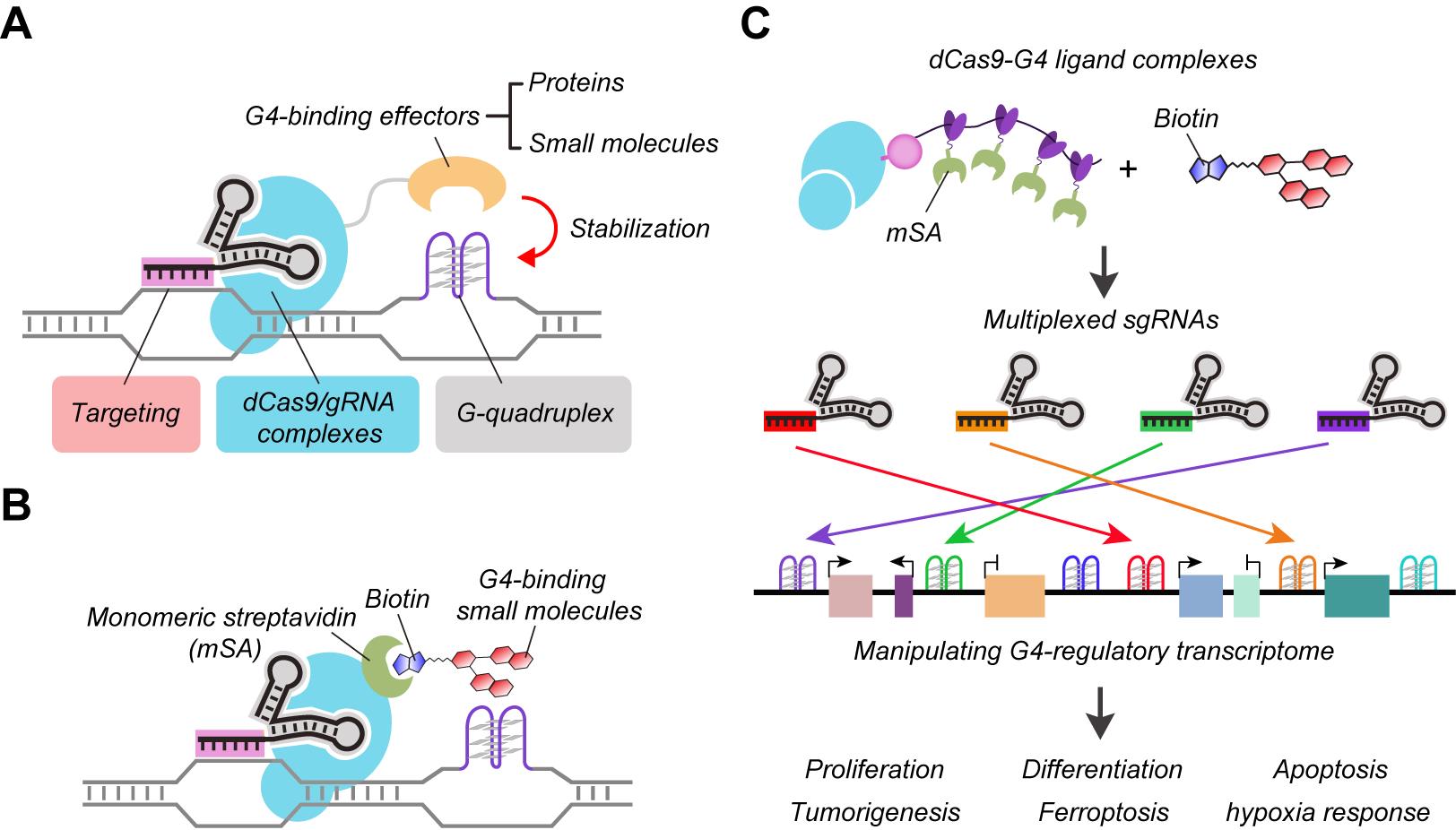Single-stranded guanine-rich DNA sequences fold into stable intramolecular and intermolecular four-stranded non-B DNA structures called G-quadruplexes (G4s).
Although DNA G4s are thought to involve in various biological processes, in many cases their causative effects are largely unclear due to lack of suitable techniques for selectively folding or unfolding DNA G4 at specific loci.
Prof. QU Xiaogang from the Changchun Institute of Applied Chemistry (CIAC) of the Chinese Academy of Sciences and his colleagues recently presented a novel strategy by combining of CRISPR and G4-stabilizing proteins or compounds to achieve DNA G4s folding at specific genome loci. This manuscript has been commended as “a game-changer article in this field.
The study was published in Nature Cell Biology (DOI: 10.1038/s41556-024-01448-1) on July 3, 2024.
The researchers employed dCas9 targeting constructs to endow G4-stabilizing protein or compounds with selectivity among different G4s. And this system can target any G4 structure in the genome by strategic sgRNA design without a global induction of G4 folding in live cells.
The fusion of G4-stabilizing protein nucleolin with a catalytically inactive Cas9 (dCas9) can specifically stabilize G4s in the promoter of oncogene MYC and muscle associated gene Igta as well as telomere G4s, leading to cell proliferation arrest, inhibition of myoblast differentiation and cell senescence, respectively.
In addition, CRISPR system can confer intra-G4 selectivity to G4-binding compounds PDC and PDS. This system has been used to stabilize the G4s within the promoter regions of two well-established lncRNAs NEAT1 and MALAT1, as well as several key genes implicated in ferroptosis, oxidative stress, hypoxia response, and MAPK pathway. Compared with traditional G4 ligands, CRISPR-guided Bio-PDC enables a more precise investigation into the biological functionality of de novo G4s.
This technology would pave the way for illustrating the association of specific G4s with defined biological processes or human diseases. Besides, this design may open a new avenue in live cells for screening of G4 probe or G4 drug candidate, which possesses specific targeting only to the interested G4 with the low risk of off-target effects, promoting G4-based disease diagnosis and therapy.

The combination of CRISPR and G4-stabilizing molecules for specific DNA G4s folding. (Image by CIAC)
